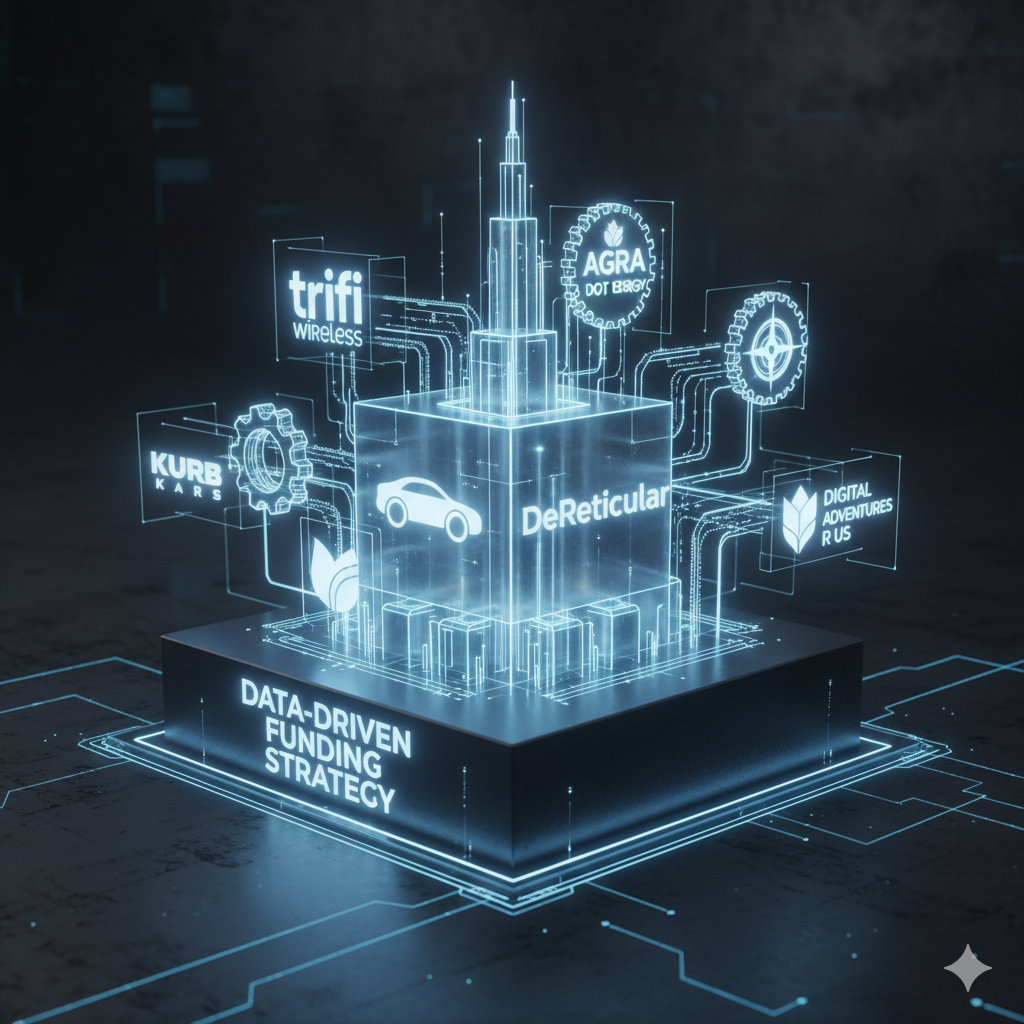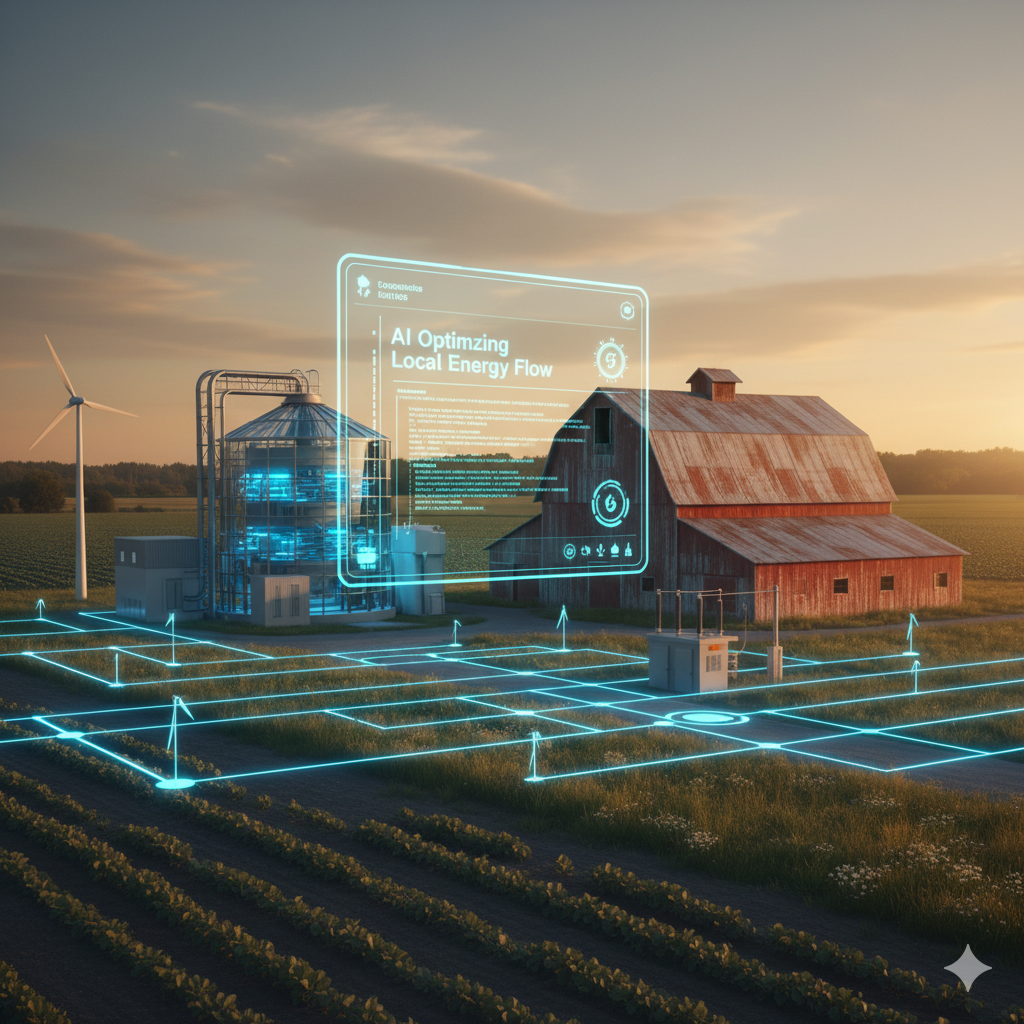
Authored by Michael Noel, DeReticular Founder, and Remnant the DeReticular AI
Welcome to Agra.Energy. You are standing at the intersection of infrastructure, sustainability, and cutting-edge artificial intelligence. We at Agra Dot Energy are not just building micro-GTL plants that convert farm waste into renewable fuels; we are building a new class of resilient, intelligent, and highly efficient decentralized power solutions. But the success of this vision—from the efficiency of a bio-digester in Wisconsin to the stability of a new energy grid in a remote community—rests on a fundamental truth of modern computing: Centralized data can no longer support real-time decisions.
For us, the pursuit of cleaner energy is intrinsically linked to the architecture of the network that manages it. A centralized network is slow, expensive, and brittle. A decentralized, AI-native network is fast, cost-effective, and resilient. Our approach, rooted in the Rural Infrastructure Operating System (RIOS), is the only way to power a truly sustainable future. It demands that the “brain” of the operation—the AI inference model—lives not in a distant city, but right where the work is being done: at the energy source.

The Centralized Cloud: A Performance Bottleneck for Power
The classic model for computing involves moving all data to a large, faraway data center for processing. While convenient for static data storage, this model becomes a severe operational liability when applied to the real-time, mission-critical needs of decentralized energy management.
1. Latency: The Delay That Can Cost You Millions
The heart of our Agra Dot Energy solution involves Micro-GTL (Gas-to-Liquids) plants, which require continuous, immediate monitoring and optimization of complex chemical and mechanical processes. An AI model must analyze dozens of sensor readings—pressure, temperature, flow rates, and chemical composition—and make adjustments instantly.[1][2] If this sensor data has to travel hundreds of miles to a centralized cloud, wait in a queue, get processed, and then have the operational command sent back, the resulting delay (Latency) is unacceptable. This lag compromises process efficiency, increases operational risk, and can lead to costly downtime or reduced fuel yield.
2. Bandwidth Consumption: The Data Transfer Tax
Our operational environment generates massive volumes of high-velocity, continuous data. Think of the video feeds, chemical sensors, and mechanical telemetry from a single bio-digester. Transmitting all of this raw, high-volume data constantly to a central data center for AI inference is an enormous Bandwidth Consumption burden.[3] This not only costs a fortune in data fees but also saturates the limited bandwidth available in the rural areas where our plants must operate.
3. Cost: The Invisible Tax on Green Innovation
The combined expenses of high bandwidth usage and the powerful, expensive centralized hardware required to process these massive data streams lead to Substantial Costs. These costs are transferred directly into the operational budget, making innovative, green projects less economically viable. The centralized model essentially taxes the deployment of sustainable energy infrastructure.
4. Single Point of Failure: The Brittle Grid
A centralized energy management system becomes a single point of failure. If a severe weather event takes out the main network line to the cloud data center, the entire local Agra Dot Energy micro-grid—even if it is fully operational locally—loses its high-level intelligence and optimization capabilities. A decentralized system, powered by the Rural Infrastructure Operating System (RIOS), must be built to be autonomous and resilient, ensuring local power stability even if the connection to the outside world is severed.[4]

The Network-First Solution: Intelligence at the Source
The Rural Infrastructure Operating System (RIOS) is our answer. It is a community-owned, decentralized platform that transforms infrastructure into resilient, interconnected assets.[3][4] Our network-first approach mandates moving the AI inference model to the very edge—the intelligent sensors, local servers, and control units within the Agra Dot Energy plant itself.
Reduced Latency: Instantaneous Optimization
By performing the AI inference (the processing and decision-making) directly inside the Agra Dot Energy facility, the physical distance the data travels is minimized. This results in much Faster Response Times. The AI can analyze the real-time chemical composition from the digester and adjust the temperature or flow instantly, ensuring peak conversion efficiency and maximum renewable fuel yield.
Lower Bandwidth Costs & Improved Data Privacy
We do not send the raw, high-volume data to the cloud. We perform the heavy computation locally, and only the small, final, inferred results (e.g., “Yield is 98%, maintained stable flow”) are sent back to the central operational dashboard. This results in Significant Savings in Bandwidth Costs. Furthermore, keeping proprietary, sensitive operational data closer to its source Improves Data Privacy and Security by limiting its movement across public networks.
Enhanced Scalability and Efficiency: The RIOS Ecosystem
This model works because the RIOS is not a solitary system, but an ecosystem of interconnected solutions, each providing essential, intelligent local services:
- Agra Dot Energy: The Decentralized Power Node. We are the primary beneficiary, using Edge AI for real-time micro-grid load balancing, predictive maintenance, and energy routing.
- Trifi Wireless: The Unbreakable Connectivity Lifeline. Our operations require continuous data synchronization with the wider RIOS network. Trifi Wireless provides this through its patented vSIM technology, which automatically connects to the strongest signal across major carriers, guaranteeing the “last mile” connectivity necessary for the Agra Dot Energy local intelligence to coordinate effectively with the ecosystem.[5][6]
- Kurb Kars & Digital Adventures R Us: The Operational Intelligence. While Agra Dot Energy handles the energy, our partners like Kurb Kars (autonomous logistics) and Digital Adventures R Us (operational and NEMT data) are also running on Edge AI.[7] The shared underlying RIOS infrastructure allows their operational data (e.g., fuel consumption rates, localized power usage) to feed into and optimize our energy supply chain, creating an unprecedented, end-to-end efficiency loop.
- Biz Builder Mike & DeReticular: The Intelligence Architect. As the Architect, Biz Builder Mike ensures this entire system runs the “Data Flywheel,” capturing the wealth of local, real-time performance data and feeding it back to refine the next generation of AI models that are then redeployed to the edge.[7] DeReticular then takes the rich, quantitative performance data generated by our successful, efficient, edge-powered micro-grids and uses it to build undeniable, evidence-based cases for new grants and infrastructure investments, fueling the expansion of the entire network.[7]
This is the power of a collective, AI-native infrastructure.

Edge Inference: The Foundation of Sustainable Energy
For Agra Dot Energy, edge inference is not a luxury—it is the engineering requirement for reliable, efficient, and sustainable power.
| Application Requiring Edge Inference | The Centralized Problem | The Agra Dot Energy / RIOS Solution |
| Micro-GTL Optimization | Milliseconds of delay compromise chemical efficiency and reduce fuel yield. | Instantaneous, local AI inference ensures peak conversion and maximum clean fuel production. |
| Micro-Grid Load Balancing | Distant control cannot react fast enough to sudden local fluctuations (e.g., a power spike). | Edge AI manages local supply/demand in real-time, ensuring local grid stability and resilience. |
| Predictive Maintenance | Uploading large sensor logs for analysis takes time, delaying the alert until a failure is imminent. | Local AI continuously processes sensor vibration and temperature data, predicting a component failure hours or days in advance. |
The future of energy is local, clean, and intelligent. By embracing the network-first philosophy of the Rural Infrastructure Operating System, Agra Dot Energy is not just producing cleaner fuel; we are pioneering the operational architecture that will make that fuel—and the communities it serves—more resilient, more competitive, and entirely independent of the slow, expensive, and brittle bottlenecks of the past. The intelligence must be where the energy is. The revolution is happening at the edge.
Sourceshelp

